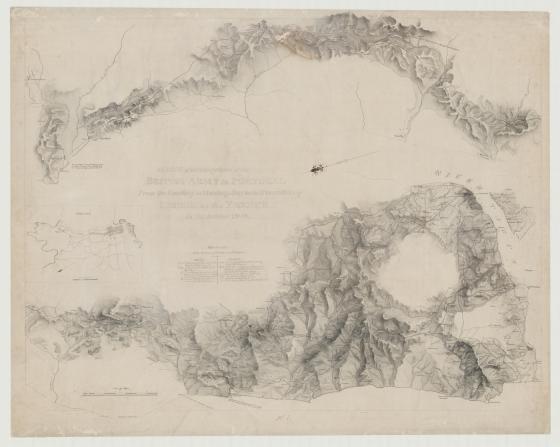
Sketch of the operations of the British army in Portugal, from the landing in Mondego Bay to the evacuation of Lisbon by the French in September 1808 1840
Keen to lessen British power in Europe and to prevent British trade with European ports, Napoleon's strategy was to invade Portugal, the only remaining European port still open to British imports. The invasion of Spain and Portugal resulted in the Spanish and Portuguese royal families being deposed and battles broke out along the Iberian Peninsula between the French and the local militas. The British landed an expeditionary force under the command of Sir Arthur Wellesley (later to become the Duke of Wellington), on 1st August 1808. The British were victorious at their first two battles against the French at Rolica on 17 August 1808 and then at Vimiero on 21st August 1808.
Prior to his posting in New South Wales as Surveyor-General, Thomas Mitchell served as second lieutenant in the 95th Regiment in the Peninsula War at the battles of Ciudad Rodrigo, Badajoz and Salamanca. He was tasked with providing topographical intelligence and after the War, was selected by Sir George Murray, the quartermaster-general, to provide a cartographical record of the battles based on the many army surveys done during the conflict. The collection held by the State Library appears to be Mitchell’s own personal collection of maps. It does not include any final states, but consists of trial proofs of lithographs and engravings of most of the maps in various degrees of completeness, together with a number of manuscript maps. In July 1838 Mitchell obtained a further twelve months leave from his work in New South Wales as he was still working on the plans of the Peninsular battles. These were finished at the end of 1840 and, as published by James Wyld, are beautiful examples of Mitchell's skill as a draftsman.